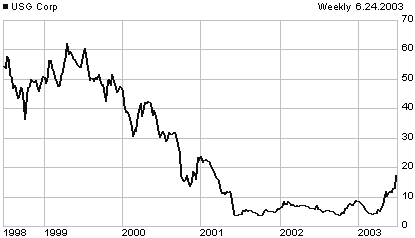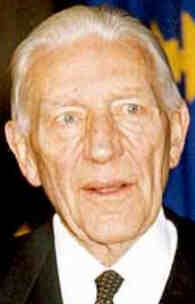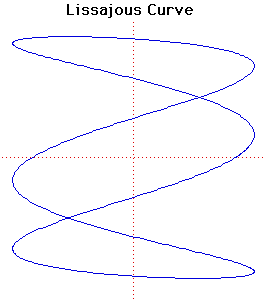1859
Quelques 30'000 morts de la Bataille de Solférino
^top^
Le royaume de Piemont et de Sardaigne, allié à la France, mène une
guerre pour l’Indépendance de l’Italie contre l’Autriche. Pour prix
de sa participation, la France recevra la Savoie et Nice. Deux sanglantes
victoires, Magenta (voir article à ce sujet à la date du 4 Juin) et
Solferino, le 24 juin. Ce jour, les armées françaises et sardes font
face à l'armée autrichienne.
En dépit de la violence des combats qui font quelques 30 000 morts
de part et d'autre et des milliers de blessés auxquels les religieuses
ne parviennent pas à porter secours, cette bataille, livrée presque
par hasard, est remportée par les armées françaises et sardes, grâce
au courage des zouaves qui prennent d'assaut les fortifications du
village de Solférino.
Le soir,
Napoléon III télégraphie à Paris : "Grande bataille et grande victoire."
Celui-ci, par peur de l’opinion publique, qui ne comprend pas que
ses enfants aillent mourir en Italie, ainsi que par crainte de voir
la Prusse entrer dans la guerre, arrête brusquement son aide. Le royaume
de Piémont reçoit la Lombardie. Mais les mouvements de libération
n’arrêteront pas pour autant. Les carbonari sont actifs et demandent
l’union des états pontificaux au Piémont. C’est alors l’épisode "Garibaldi"
(voir anniversaire des 24 Mars et 11 Mai).
Henri
Dunant, horrifié, organise des soins pour les blessés. De cette
initiative, naîtra , en 1864, la Croix Rouge internationale.
The
Italian Campaign of 1859.
Soigner les blessés de Solférino.
^top^
Un suisse, Henri Dunant , 31 ans, horrifié s'émeut devant le sort
des victimes de la bataille de Solférino, ce sanglant combat. Il fait
appel à des volontaires pour soigner les blessés. De cette initiative,
naîtra , en 1864, la Croix Rouge internationale. La bataille de Solférino,
si importante dans le processus d’unification et d’indépendance de
l’Italie, connaît également une autre conséquence importante et positive,
la création de la "Croix Rouge Internationale" par le suisse Henri
Dunant (1828 – 1910).
Philanthrope
suisse, ce Genevois élevé dans l’atmosphère de piété milite dans les
Unions chrétiennes de jeunes gens et entre au service de la Compagnie
genevoise de colonisation, à Sétif. En 1858, tout en gardant la citoyenneté
suisse, Henri Dunant est naturalisé français. Pour régler les problèmes
nés de ses activités algériennes, il cherche à intéresser Napoléon
III à ses difficultés en lui offrant la dédicace d’un ouvrage écrit
à sa louange. En 1859, il le suit en Italie, lors de la guerre contre
l’Autriche. Cette circonstance va décider de sa destinée. Il se trouve
présent, sur les arrières de l’armée française, à la journée de Solferino
(24 Jun), qui fait 40'000 tués et blessés. Dunant voit affluer au
quartier général de Castiglione les blessés et les mourants. Il constate
l’incurie et l’indifférence avec laquelle on traite les victimes.
Dunant improvise des secours, organise les soins, mobilise les volontés
et, jusqu’au 12 Jul, continue son action à Brescia, publiant dans
les journaux de Genève des appels à la charité.
Il traduit le choc qui a bouleversé sa vie dans un récit, publié en
novembre 1862, Un souvenir de Solferino. Toute l’Europe s’émeut
à la lecture de ces pages qui auront huit éditions, jusqu’en 1873.
L’auteur formule le vœu de "quelque principe international, conventionnel
et sacré, lequel, une fois agréé et ratifié, servirait de base à des
sociétés de secours pour les blessés dans les divers pays de l’Europe".
Son souhait trouve un écho à la Société Genevoise d’Utilité Publique.
Une commission est créée. Elle charge Dunant de présenter le mémoire
qu’elle a élaboré, au Congrès de statistique de Berlin, en septembre
1863. La Commission des cinq se transforme en un Comité international
de secours aux blessés. Dans la capitale prussienne, Dunant, aidé
du médecin militaire hollandais Basting, lance un appel aux puissances
pour réunir une conférence internationale à Genève, initiative qui
fait de lui le promoteur indiscutable de la future Croix-Rouge.
La Conférence de Genève, groupant les
représentants de seize États, s’ouvre en octobre 1863. Elle préconise
la création de sociétés nationales de secours aux blessés militaires
officiellement reconnues. Appia et Dufour font adopter un signe distinctif
: le brassard blanc à croix rouge, inverse du drapeau fédéral suisse.
Le 24 Aug 1864 sont signées les conventions de Genève, qui jettent
les bases du droit humanitaire qui seront développée
dans des conventions ultérieures. Elles font obligation de
soigner les blessés, sans distinction de nationalité, et prévoient
la neutralisation du personnel et du matériel sanitaires. Dunant est
alors au comble de sa renommée et couvert d’honneurs. Vice-président
de la Société française de secours aux blessés militaires (1864),
il parcourt l’Europe pour propager l’idéal de la Croix-Rouge.
Son imagination ne cesse d’engendrer
des projets politico-économiques passablement utopiques, comme la
neutralisation de la Méditerranée ou, ce qui fait de lui un précurseur
du sionisme, le retour des Juifs en Palestine. Ses affaires algériennes
périclitent et Dunant use de son crédit pour tenter de les renflouer
en multipliant les emprunts. Il fait investir plus de trois millions
de francs dans des mines, des fabriques, des exploitations forestières,
mal gérées et déficitaires. En 1867, le Crédit Genevois, principal
créancier, le fait déclarer en faillite et condamner comme civilement
responsable.
À trente-neuf ans,
totalement ruiné, Dunant quitte sa ville natale. Mis au ban de la
société, il démissionne de ses fonctions de secrétaire du Comité international
de la Croix-Rouge, qui passe désormais son nom sous silence. Il cherche
à rétablir sa situation, mêlant philanthropie et commerce dans des
entreprises qui s’avèrent malheureuses. En 1888, il échoue à Heiden,
comme indigent, à l’hôpital du district. Pendant vingt ans, dans son
étroite chambre, Dunant accumule une énorme documentation, écrit et
récrit ses Mémoires, qu’il laissera inachevées. Il a retrouvé quelques
fidèles, qui s’emploient à le tirer de l’isolement.
En 1895, Georg Baumgartner, journaliste au Züricher Nachrichten, apprend,
par hasard, l’existence du créateur de la Croix-Rouge. Dans des articles
à sensation, il dénonce le "scandale Dunant" et lance un appel au
Conseil fédéral suisse, pour que soit rendue au philanthrope la place
qui lui revient. Dunant reprend la plume pour soutenir les idées sur
le pacifisme et le désarmement qui connaissent un regain de faveur
à la fin du XIXe siècle. L’opinion européenne le redécouvre. En 1901,
tardive réhabilitation, il reçoit, avec le pacifiste français Frédéric
Passy, le premier prix Nobel de la paix et lègue le capital qui lui
est attribué à des œuvres de bienfaisance. Déjà entré dans la légende,
il meurt à Heiden le 30 octobre 1910. |
1794 Gerrit Zegelaar, Dutch artist born on 16 July 1719.
1832 Timofey
Fedorovich Osipovsky, Russian mathematician born on 02 February
1765. His most famous work is A Course of Mathematics (3 volumes,
1801-1823).
1693 Isaac Willaerts, Utrecht Dutch painter
born in 1620. |
 On
a June 24:
On
a June 24:  2002
Some 200 persons as a passenger train speeding backward downhill
out-of-control for 30 minutes hits an oncoming cargo train in Igandu near
Mpwapwa, Tanzania, at about 08:30. Some 800 are injured. All the passenger
train's 22 coaches, except one second-class coach, derailed and overturned.
As the passenger train was climbing the Fufu escarpment at Igandu to reach
Dodoma, its engine failed. After mechanics fixed it, the train rolled backwards
to test the engine, which failed again as well as the brakes. The engineer
jumped off and suffered only minor injuries.
2002
Some 200 persons as a passenger train speeding backward downhill
out-of-control for 30 minutes hits an oncoming cargo train in Igandu near
Mpwapwa, Tanzania, at about 08:30. Some 800 are injured. All the passenger
train's 22 coaches, except one second-class coach, derailed and overturned.
As the passenger train was climbing the Fufu escarpment at Igandu to reach
Dodoma, its engine failed. After mechanics fixed it, the train rolled backwards
to test the engine, which failed again as well as the brakes. The engineer
jumped off and suffered only minor injuries. 1880
1880